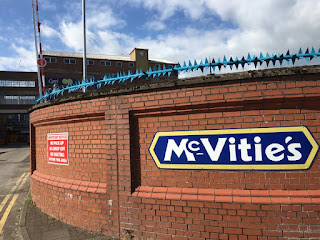The Longest Day
Four years later, the officers found themselves part of the D-Day forces. Why they decided to open the bottle and drink it beforehand rather than after landing on the D-Day beaches, we will never know. Perhaps they thought that they might not all make it through this day. Departing from Weymouth harbour, they embarked for Normandy taking with them the bottle. They wrote a message on headed notepaper, placed it in the bottle and threw it overboard. What were the men thinking at that point? As part of the invading force they must have realised that the next few weeks were not going to be easy.
Four days later, on the 10th June 1944, the bottle was washed up on the Isle of Wight and picked up by Sergeant Railton, 409 Heavy Anti-Aircraft Battery Royal Artillery, who carried out the instructions on the note. The bottle was posted to the Border Regimental Depot in Carlisle Castle, arriving on 25th September 1944.
The message inside the bottle, dated 5th June 1944, reads;
If found please
post this paper (including the bottle) to The Castle, Carlisle, Cumberland,
England. Signed H. J. Bartholomew, J. W. Triggs, J. Westoll, T. Graham (MO), C.
Askew, R. C. Troughton, B. Oliver, T. Heath, T. Mackie.
All but one of these officers survived the landings on Gold Beach, and the War. The exception was Basil Oliver who, aged 23, was killed in Normandy on 17th August 1944. He is buried in Ranville War cemetery, north-east of Caen in France.





Comments
Post a Comment